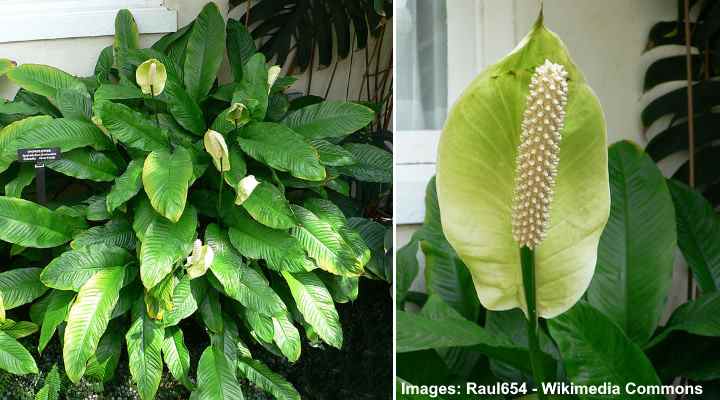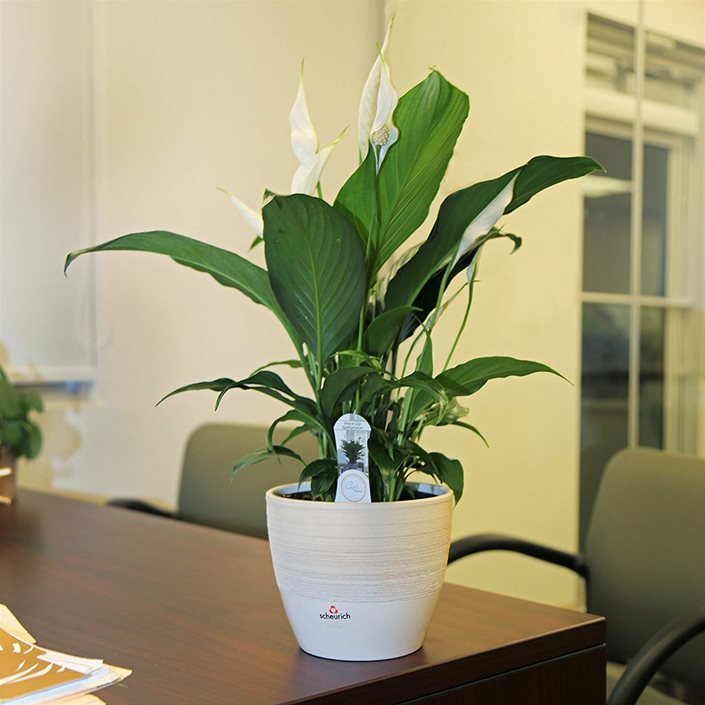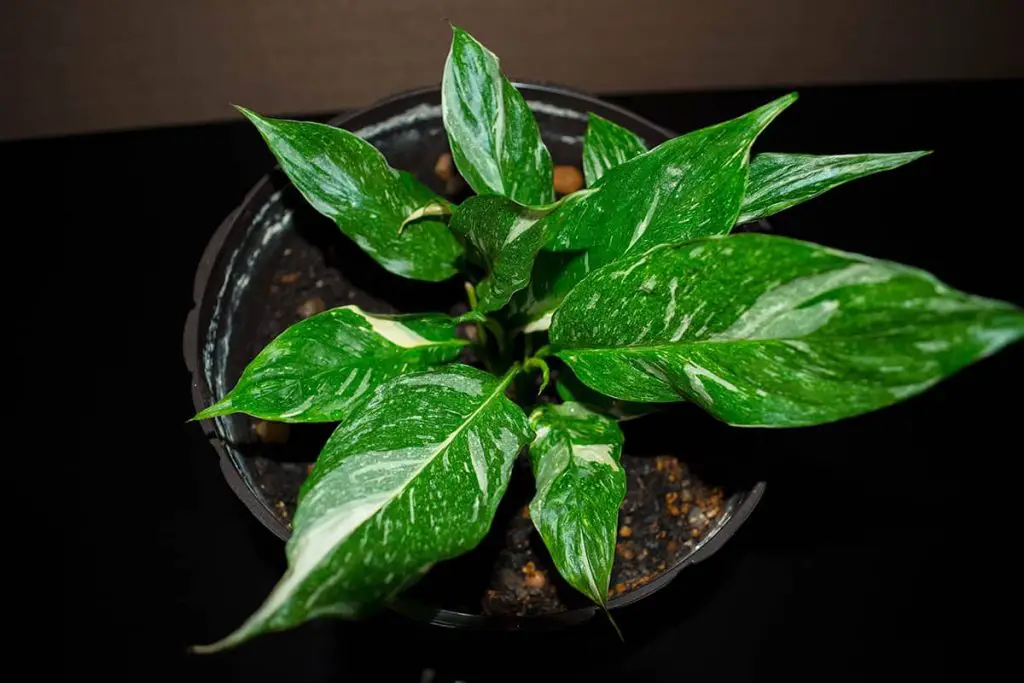Unlocking the Secrets to a Thriving Spathiphyllum Plant
The Spathiphyllum plant, commonly known as the Peace Lily, has become a staple in many homes due to its elegant appearance and low-maintenance requirements. As a popular houseplant, it’s essential to understand the importance of proper care to ensure the plant’s longevity and beauty. Learning how to care for a Spathiphyllum plant is crucial to unlock its full potential and enjoy its numerous benefits. With its air-purifying properties and ornamental value, this plant is an excellent addition to any indoor space.
Native to the tropical regions of Central and South America, the Spathiphyllum plant has adapted to thrive in a variety of environments. However, to ensure optimal growth and health, it’s essential to provide the right conditions. By understanding the specific needs of your Spathiphyllum plant, you can create a nurturing environment that promotes healthy growth and encourages blooming.
One of the most significant advantages of the Spathiphyllum plant is its ability to purify the air and improve indoor air quality. This makes it an excellent choice for homes, offices, and public spaces. Additionally, its elegant white blooms and dark green leaves add a touch of sophistication to any room. By learning how to care for a Spathiphyllum plant, you can enjoy its beauty and benefits for years to come.
Proper care for a Spathiphyllum plant involves a combination of factors, including lighting, temperature, humidity, watering, and fertilization. By understanding these elements and providing the right conditions, you can create a thriving environment that promotes healthy growth and encourages blooming. In the following sections, we’ll delve into the specifics of Spathiphyllum plant care, providing you with the knowledge and expertise to unlock the full potential of your plant.
Choosing the Right Environment for Your Spathiphyllum
When it comes to creating an ideal environment for your Spathiphyllum plant, there are several factors to consider. Lighting, temperature, and humidity all play a crucial role in determining the health and well-being of your plant. By understanding the specific needs of your Spathiphyllum, you can create a nurturing environment that promotes healthy growth and encourages blooming.
Lighting is one of the most critical factors to consider when caring for a Spathiphyllum plant. These plants prefer bright, indirect light but can tolerate low light conditions. Placing your Spathiphyllum near an east- or west-facing window is ideal, as it provides the right amount of light without causing the leaves to become scorched. Avoid placing your plant in direct sunlight, as it can cause the leaves to become discolored and the plant to become stressed.
Temperature is another essential factor to consider when caring for a Spathiphyllum plant. These plants prefer temperatures between 65°F and 80°F (18°C and 27°C), making them ideal for indoor spaces. Avoid placing your plant near heating or cooling vents, fireplaces, or drafty windows, as it can cause the temperature to fluctuate and stress the plant.
Humidity is also crucial for Spathiphyllum plants, as they thrive in environments with moderate to high humidity. To maintain the right humidity levels, you can place the plant on a tray filled with water and pebbles or use a humidifier nearby. This will help to create a microclimate that mimics the plant’s natural habitat and promotes healthy growth.
When selecting the perfect spot for your Spathiphyllum plant, consider the overall aesthetic you want to create. These plants are known for their elegant white blooms and dark green leaves, making them a stunning addition to any room. By placing your plant in a spot with bright, indirect light and moderate temperatures, you can create a beautiful display that showcases the plant’s natural beauty.
By understanding the specific needs of your Spathiphyllum plant and creating an ideal environment, you can promote healthy growth and encourage blooming. Remember to monitor the plant’s response to its environment and make adjustments as needed to ensure optimal care. With the right conditions, your Spathiphyllum plant will thrive and provide you with years of beauty and enjoyment.
The Art of Watering: A Delicate Balance for Your Peace Lily
Watering is one of the most critical aspects of caring for a Spathiphyllum plant. These plants are sensitive to overwatering and underwatering, and finding the right balance is essential to ensure their health and well-being. When learning how to care for a Spathiphyllum plant, it’s essential to understand the importance of proper watering techniques.
Overwatering is one of the most common mistakes people make when caring for a Spathiphyllum plant. This can cause the roots to rot, leading to a range of problems, including root decay, leaf drop, and even plant death. To avoid overwatering, it’s essential to check the soil moisture regularly. Stick your finger into the soil up to the first knuckle, and if the soil feels dry, it’s time to water.
On the other hand, underwatering can also be detrimental to your Spathiphyllum plant. This can cause the leaves to become wilted and discolored, and the plant may become stressed. To avoid underwatering, make sure to water your plant thoroughly, allowing excess water to drain from the pot.
So, how often should you water your Spathiphyllum plant? The frequency of watering depends on a range of factors, including the temperature, humidity, and light levels in your home. As a general rule, water your Spathiphyllum plant when the top inch of soil feels dry to the touch. This is usually every 7-10 days during the spring and summer months when the plant is actively growing.
It’s also essential to consider the potting mix and container when watering your Spathiphyllum plant. A well-draining potting mix can help prevent waterlogged soil, while a container with good drainage holes can ensure excess water is removed from the pot.
By finding the right balance of watering, you can ensure your Spathiphyllum plant remains healthy and thrives. Remember to monitor your plant’s response to watering and adjust your schedule accordingly. With proper care and attention, your Spathiphyllum plant will reward you with beautiful blooms and elegant foliage.
Fertilizing for Optimal Growth: A Guide to Nourishing Your Spathiphyllum
Fertilizing is an essential part of caring for a Spathiphyllum plant. These plants require a balanced diet of nutrients to promote healthy growth and encourage blooming. When learning how to care for a Spathiphyllum plant, it’s essential to understand the importance of fertilization and how to choose the right fertilizer.
There are several types of fertilizers available for Spathiphyllum plants, including liquid, granular, and slow-release fertilizers. Liquid fertilizers are a popular choice, as they provide a quick and easy way to nourish your plant. Granular fertilizers, on the other hand, provide a slow release of nutrients, which can be beneficial for plants that require a steady supply of nutrients.
When choosing a fertilizer for your Spathiphyllum plant, look for a balanced formula that contains equal amounts of nitrogen, phosphorus, and potassium (NPK). A balanced fertilizer will promote healthy growth and encourage blooming. Avoid using high-nitrogen fertilizers, as they can cause the plant to become leggy and weak.
It’s also essential to consider the frequency of fertilization. Spathiphyllum plants require fertilization during the growing season, which typically occurs in the spring and summer months. During this time, fertilize your plant once a month with a balanced fertilizer. Avoid fertilizing during the fall and winter months, as the plant is dormant and does not require as many nutrients.
Overfertilization is a common mistake that can be detrimental to your Spathiphyllum plant. This can cause the plant to become stressed, leading to a range of problems, including leaf burn and root damage. To avoid overfertilization, start with a small amount of fertilizer and gradually increase the amount as needed.
By fertilizing your Spathiphyllum plant regularly, you can promote healthy growth and encourage blooming. Remember to choose a balanced fertilizer and avoid overfertilization to ensure the best results. With proper care and attention, your Spathiphyllum plant will thrive and provide you with years of beauty and enjoyment.
Pruning and Grooming: Maintaining Your Peace Lily’s Elegant Appearance
Pruning and grooming are essential parts of caring for a Spathiphyllum plant. These plants require regular maintenance to maintain their shape and promote healthy growth. By pruning and grooming your Spathiphyllum plant, you can encourage blooming, prevent disease, and keep your plant looking its best.
When pruning your Spathiphyllum plant, it’s essential to use the right tools. Use a pair of sharp, clean scissors or pruning shears to avoid spreading disease. Remove any dead or dying leaves or flowers, as these can attract pests and create an environment for disease to spread.
Start by removing any dead or dying leaves or flowers. Cut the leaves or flowers off at the base of the plant, making sure not to damage the stem. Next, remove any leggy or overgrown stems. Cut the stems back to about half their length, making sure to leave at least two nodes on each stem. This will encourage new growth and prevent the plant from becoming leggy.
After pruning, use a soft-bristled brush or a damp cloth to gently remove any dust or debris from the leaves. This will help to keep the leaves clean and prevent pests from making themselves at home.
Grooming is also an essential part of caring for a Spathiphyllum plant. Use a soft-bristled brush or a damp cloth to gently remove any dust or debris from the leaves. This will help to keep the leaves clean and prevent pests from making themselves at home.
By pruning and grooming your Spathiphyllum plant regularly, you can maintain its elegant appearance and promote healthy growth. Remember to prune and groom your plant at the right time, as this can help to encourage blooming and prevent disease.
When learning how to care for a Spathiphyllum plant, it’s essential to understand the importance of pruning and grooming. By following these simple steps, you can keep your plant looking its best and promote healthy growth.
Pest Control and Common Problems: Troubleshooting Your Spathiphyllum Plant
Despite their hardy nature, Spathiphyllum plants can be susceptible to pests and diseases. Regular monitoring and prompt action can help prevent infestations and ensure the health of your plant. When learning how to care for a Spathiphyllum plant, it’s essential to understand the common pests and problems that can affect these plants.
Spider mites are one of the most common pests that can affect Spathiphyllum plants. These tiny, spider-like insects can cause yellowing or bronzing of the leaves, and can be difficult to detect. To control spider mites, use a gentle insecticidal soap or neem oil, and make sure to isolate the plant to prevent the infestation from spreading.
Mealybugs are another common pest that can affect Spathiphyllum plants. These small, white insects can cause stunted growth and yellowing of the leaves. To control mealybugs, use a gentle insecticidal soap or neem oil, and make sure to remove any heavily infested areas of the plant.
Root rot is a common problem that can affect Spathiphyllum plants, particularly if the soil is too moist or waterlogged. To prevent root rot, make sure to use a well-draining potting mix and avoid overwatering. If you suspect root rot, remove the plant from the pot and inspect the roots. Trim away any affected areas and repot the plant in fresh, well-draining soil.
Other common problems that can affect Spathiphyllum plants include leaf drop, yellowing of the leaves, and failure to bloom. These problems can often be caused by environmental factors, such as temperature fluctuations, low humidity, or inadequate light. By adjusting the environment and providing proper care, you can help prevent these problems and ensure the health of your plant.
By being aware of the common pests and problems that can affect Spathiphyllum plants, you can take prompt action to prevent infestations and ensure the health of your plant. Regular monitoring and proper care can help prevent many of these problems, and ensure that your plant remains healthy and thriving.
Repotting and Propagation: Giving Your Spathiphyllum a Fresh Start
Repotting and propagation are essential parts of caring for a Spathiphyllum plant. These processes can help to refresh the soil, provide a larger pot if necessary, and create new plants to share with friends and family. When learning how to care for a Spathiphyllum plant, it’s essential to understand the process of repotting and propagation.
Repotting a Spathiphyllum plant is a relatively simple process. Start by choosing a pot that is only slightly larger than the original pot. Use a well-draining potting mix and gently remove the plant from its pot. Inspect the roots and trim away any dead or damaged roots. Place the plant in its new pot and add fresh potting mix around the roots.
Propagation is also a great way to create new Spathiphyllum plants. This can be done by dividing the plant or by using leaf cuttings. To divide the plant, gently remove it from its pot and separate the roots into sections. Replant each section in a new pot and water thoroughly. To use leaf cuttings, cut off a healthy leaf and allow it to dry for a few days. Plant the leaf in a pot of well-draining soil and water thoroughly.
Repotting and propagation can be done at any time of the year, but it’s best to do it in the spring or summer when the plant is actively growing. This will give the plant the best chance to establish itself in its new pot and to create new growth.
By repotting and propagating your Spathiphyllum plant, you can give it a fresh start and create new plants to enjoy. Remember to choose a well-draining potting mix and to water thoroughly after repotting or propagating. With proper care and attention, your Spathiphyllum plant will thrive and provide you with years of beauty and enjoyment.
Enjoying the Fruits of Your Labor: Common Uses for Spathiphyllum Plants
Spathiphyllum plants, also known as Peace Lilies, are not only a beautiful addition to any home or office, but they also offer a range of benefits that make them a popular choice among plant enthusiasts. By learning how to care for a Spathiphyllum plant, you can unlock its full potential and enjoy the many uses it has to offer.
One of the most significant advantages of Spathiphyllum plants is their air-purifying properties. These plants are known to remove toxins and pollutants from the air, making them an excellent choice for indoor spaces. By placing a Spathiphyllum plant in your home or office, you can help create a healthier environment and improve the overall air quality.
In addition to their air-purifying properties, Spathiphyllum plants are also highly ornamental. Their elegant white blooms and dark green leaves make them a stunning addition to any room. Whether you’re looking to add a touch of elegance to your living room or want to brighten up your workspace, a Spathiphyllum plant is an excellent choice.
Spathiphyllum plants also have potential medicinal applications. The plant’s leaves and flowers have been used in traditional medicine for centuries to treat a range of ailments, including fever, rheumatism, and skin conditions. While more research is needed to fully understand the plant’s medicinal properties, it’s clear that Spathiphyllum plants have a lot to offer.
For those looking to get creative with their Spathiphyllum plant, there are many uses beyond its air-purifying and ornamental properties. The plant’s flowers can be used in floral arrangements, and its leaves can be used in craft projects. You can also use the plant’s leaves to make a natural insecticide or fungicide.
By learning how to care for a Spathiphyllum plant, you can unlock its full potential and enjoy the many benefits it has to offer. Whether you’re looking to improve the air quality in your home, add a touch of elegance to your decor, or explore the plant’s medicinal properties, a Spathiphyllum plant is an excellent choice. With proper care and attention, your Spathiphyllum plant can thrive and provide you with years of enjoyment and benefit.






